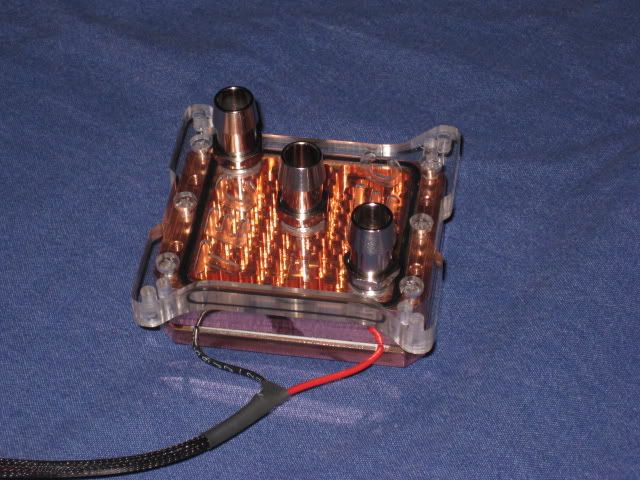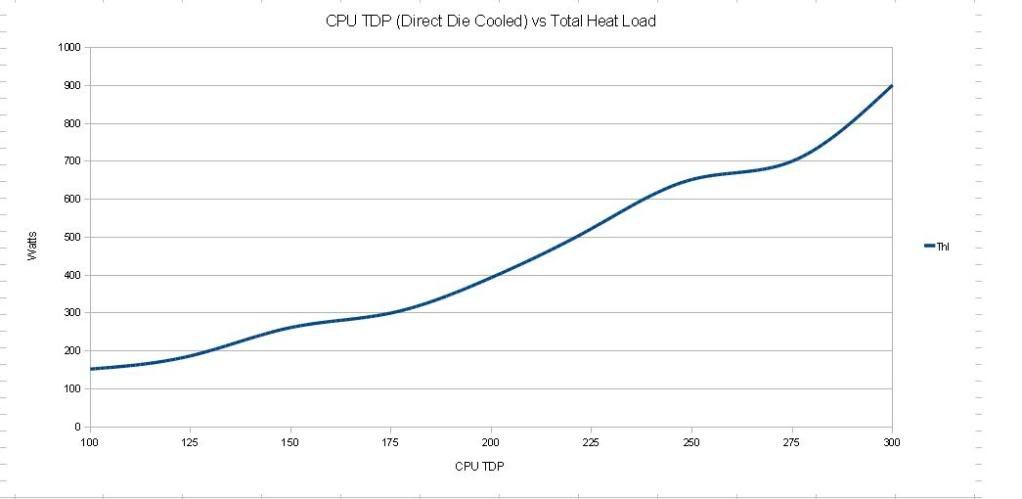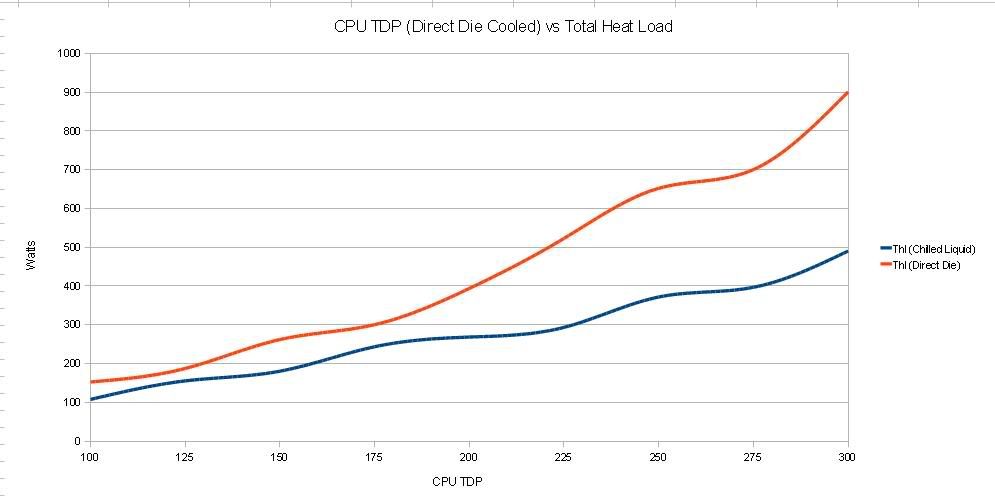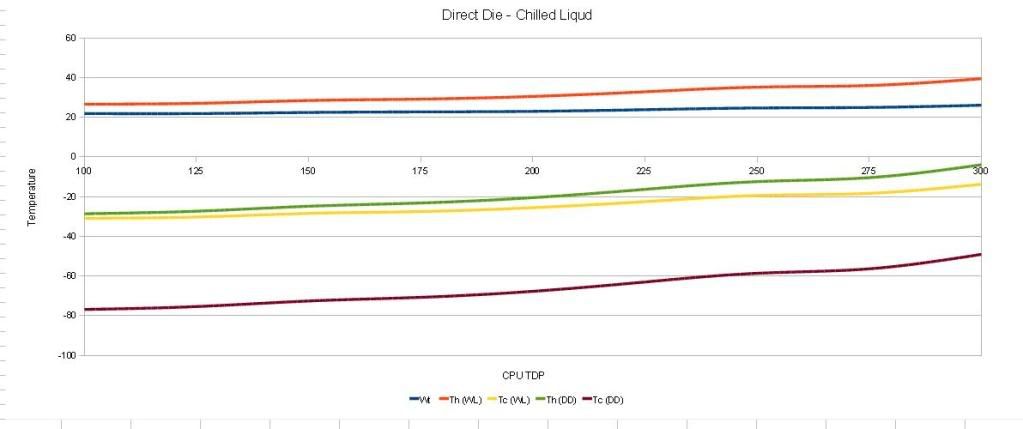You are using an out of date browser. It may not display this or other websites correctly.
You should upgrade or use an alternative browser.
You should upgrade or use an alternative browser.
eXtreme Liquid Cooling - Build Log + Overclocking
- Thread starter Pneumonic
- Start date
More options
Thread starter's postslooking epic!
why is there so much of the putty paste round cpu (yes i am daft)
When anything is colder than its surroundings their is a chance condensation will form on it.. (fill a glass with cold water and leave it for 20 seconds or so). Same is applicable here.. the liquid in the tubes / water-block / CPU socket.. are all going to be well below ambient temperature and there is a chance that condensation will form.
So because of that you insulate motherboards (water and electricity a bad mix!), the putty stops the air touching areas of the board that are potentially cooler than ambient, and therefore prevents condensation forming
Update 14:
Maths Arrrghh!
Will have a small update on build progress to follow...
Most of the last couple of days however I have been doing some testing and working out the maths for the estimated temperatures...
So firstly I calculated the heat load of the TEC units based on the CPU's TDP and then the required TEC power at varying TDP to adaquetly cool the CPU.. this gave a me a total heat load for the water loop to deal with...

Next I ran these numbers through the calculator at Martin's Liquid Lab which shows how radiator(s) disperse levels of heat input and the change to water temperatures.
Next I done a bit of playing around with my reservoirs and got some numbers of the amount of heat they disperse based on an ambient temperature of around 21c, with active cooling at different water temperatures.
So now I had an estimate of water temperature in the loop depending on the heat load I was putting through

This let me 'estimate' the temperature of the TEC Hot side (Th), from which after pulling my hair out and spending a load of time converting TEC performance graphs to tables in Excel and writing formula I could calculate the estimated TEC cold side (Tc) temperatures for a given CPU TDP and TEC power output.
And the results...
Key:
Wt = Water Temperature
Th (WL) = TEC Hot side
Tc (WL) = TEC Cold side

*Calculations based on 21c Ambient
Project Mutation....?!
Well someone post a picture of Ultrasonics 62mm TEC block a week back and I thought I must have one of those and direct die cool with chilled water... so I have placed my order and one is on its way...
Drool....

So the TEC I will be using is a 400 QMax monstrosity
So the next step was to factor in the second stage of the cooling
Heat Loads Will increase with the addition TEC unit..

Comparison between the two heatloads:

And now to put that all into one big calculation...
Key:
Wt = Water Temperature
Th (WL) = TEC Hot side Liquid Loop
Tc (WL) = TEC Cold side Liquid Loop
Th (DD) = TEC Hot side Direct Die
Tc (DD) = TEC Cold Side Direct Die

*Calculations based on 21c Ambient
All numbers are estimates of course but nice to see that at 200TDP I should be around -65c to -70c.. 5ghz Quadcore, with 4ghz NB... lets see
Edit: New Graph Added
Maths Arrrghh!
Will have a small update on build progress to follow...
Most of the last couple of days however I have been doing some testing and working out the maths for the estimated temperatures...
So firstly I calculated the heat load of the TEC units based on the CPU's TDP and then the required TEC power at varying TDP to adaquetly cool the CPU.. this gave a me a total heat load for the water loop to deal with...

Next I ran these numbers through the calculator at Martin's Liquid Lab which shows how radiator(s) disperse levels of heat input and the change to water temperatures.
Next I done a bit of playing around with my reservoirs and got some numbers of the amount of heat they disperse based on an ambient temperature of around 21c, with active cooling at different water temperatures.
So now I had an estimate of water temperature in the loop depending on the heat load I was putting through

This let me 'estimate' the temperature of the TEC Hot side (Th), from which after pulling my hair out and spending a load of time converting TEC performance graphs to tables in Excel and writing formula I could calculate the estimated TEC cold side (Tc) temperatures for a given CPU TDP and TEC power output.
And the results...
Key:
Wt = Water Temperature
Th (WL) = TEC Hot side
Tc (WL) = TEC Cold side

*Calculations based on 21c Ambient
Project Mutation....?!
Well someone post a picture of Ultrasonics 62mm TEC block a week back and I thought I must have one of those and direct die cool with chilled water... so I have placed my order and one is on its way...
Drool....

So the TEC I will be using is a 400 QMax monstrosity

So the next step was to factor in the second stage of the cooling

Heat Loads Will increase with the addition TEC unit..

Comparison between the two heatloads:

And now to put that all into one big calculation...
Key:
Wt = Water Temperature
Th (WL) = TEC Hot side Liquid Loop
Tc (WL) = TEC Cold side Liquid Loop
Th (DD) = TEC Hot side Direct Die
Tc (DD) = TEC Cold Side Direct Die

*Calculations based on 21c Ambient
All numbers are estimates of course but nice to see that at 200TDP I should be around -65c to -70c.. 5ghz Quadcore, with 4ghz NB... lets see
Edit: New Graph Added
Last edited:
Soldato
wow is about all i can say, can't wait to see the finished results! 
subbed

subbed

Woooooh! . . . what the **** are you building mate!


Will the end result look anything like this?



Soldato
If you're going all out, why not get a meanwell or similar 24v PSU ?
Woooooh! . . . what the **** are you building mate!
Will the end result look anything like this?

lol...

nice to see that at 200TDP I should be around -65c to -70c
Interesting call on the direct die. Now makes more sense to me why you're going for the high capacity tecs in the heat exchanger. Are you going to pump the chilled water through mosfet /chipset blocks as well as over the cpu tec block?
What're you estimating parasitic load at? If part of it is held at -60, and the rest is at -20 or so, parasitic load is going to be high. 700W is a lot of heat to remove, if the radiators can't move it without a water - air delta of under 10 or so then the tec efficiency will go down and you'll end up with a nasty negative feedback loop. I'm sure you've taken this into account in the background to the graphs, but better to mention it just in case.
Your electricity bill is going to be quite something. Good man

JonJ "parasitic load" are you talking about the heat load the TEC's generate? If so this has been included in the calculations depending on the cooling needed.. I am not at home now so don't have the formula but found one for series running TEC's which is effectively what this is less a performance drop for the additional medium. The formula I have used are worst case scenario with quite a load of 'fat' on the performance drops from contacts etc..
Its a bit of a balance and each stage really has to be run at just enough power to 'work' over power pumps a load of heat into the water loop.. It's going to take a while I think to find the right balance and avoid total meltdown on the CPU from over / under powering either stage hense why I have a test CPU in my old 955BE
hense why I have a test CPU in my old 955BE 
Once the stages are constructed I should have some better Th / Tc readouts which I can then use to fine tune.
Its a bit of a balance and each stage really has to be run at just enough power to 'work' over power pumps a load of heat into the water loop.. It's going to take a while I think to find the right balance and avoid total meltdown on the CPU from over / under powering either stage
 hense why I have a test CPU in my old 955BE
hense why I have a test CPU in my old 955BE 
Once the stages are constructed I should have some better Th / Tc readouts which I can then use to fine tune.
The load from tec inefficiency is present but readily estimated, parasitic load is the heat transfer from the environment (air at 21 degrees, say) into the water block, tubes, motherboard etc. This is difficult to estimate. Natural convection over a sphere in a black box is tricky enough, it's probably not possible to calculate load from the environment in this case. CAD may be able to do this for you, but I wouldn't know where to begin.
It's reduced but never eliminated by cladding all the pipes, and proportional to the temperature difference. When you mentioned the cpu block at -70, that would be a 90 degree temperature gradient across a few inches of neoprene, heat transfer through that probably won't be negligible. I think you're using closed cell foam around the copper piping, I suppose my point is the thicker the better, and that you're insulating the cpu block not just to stop condensation but also to decrease the heat load the radiators have to deal with. Wrapping the cold plate in lots and lots of insulation is probably a good idea too, though again I wouldn't be keen on calculating the heat flow into the back of the aluminium plate.
Glad you've got an old cpu to experiment with. Also quite envious that you're doing this and I'm not. Are you controlling each set based on temperature?
It's reduced but never eliminated by cladding all the pipes, and proportional to the temperature difference. When you mentioned the cpu block at -70, that would be a 90 degree temperature gradient across a few inches of neoprene, heat transfer through that probably won't be negligible. I think you're using closed cell foam around the copper piping, I suppose my point is the thicker the better, and that you're insulating the cpu block not just to stop condensation but also to decrease the heat load the radiators have to deal with. Wrapping the cold plate in lots and lots of insulation is probably a good idea too, though again I wouldn't be keen on calculating the heat flow into the back of the aluminium plate.
Glad you've got an old cpu to experiment with. Also quite envious that you're doing this and I'm not. Are you controlling each set based on temperature?
The load from tec inefficiency is present but readily estimated, parasitic load is the heat transfer from the environment (air at 21 degrees, say) into the water block, tubes, motherboard etc. This is difficult to estimate. Natural convection over a sphere in a black box is tricky enough, it's probably not possible to calculate load from the environment in this case. CAD may be able to do this for you, but I wouldn't know where to begin.
It's reduced but never eliminated by cladding all the pipes, and proportional to the temperature difference. When you mentioned the cpu block at -70, that would be a 90 degree temperature gradient across a few inches of neoprene, heat transfer through that probably won't be negligible. I think you're using closed cell foam around the copper piping, I suppose my point is the thicker the better, and that you're insulating the cpu block not just to stop condensation but also to decrease the heat load the radiators have to deal with. Wrapping the cold plate in lots and lots of insulation is probably a good idea too, though again I wouldn't be keen on calculating the heat flow into the back of the aluminium plate.
Glad you've got an old cpu to experiment with. Also quite envious that you're doing this and I'm not. Are you controlling each set based on temperature?
Ah I see what you mean.. yes I guess that is 'inadvertently' taken into account I have a 10% performance drop factored in as 'fat'. Not sure that is enough or not..? But from my point of view it was an exercise to prove that two phases would 'work' more than anything else, it was also nice that the numbers came out similar to Ultrasonic's calculator for the multi-tec loop.
I will have a number of 'measures' in place to monitor and control:
1. TEC (CPU DD) - Thermal Probe (Cold Plate), AMP/Voltage Meter, PWM Adjustable
2. Chilled Loop - InLine Thermal Probe
3. TEC's (Liquid) - Thermal Probe (Cold Plate), AMP/Voltage Meter, PWM Adjustable
4. Water Loop - InLine Thermal Probe
The Crosshair board I am using allows an additional temperature probes to be attached which I can then use in speed fan to control fan speeds on the water loop. Will also 'splice' them and display on a panel on the front of the case along with the AMP/Voltage Meter read outs and PWM control knobs for the TEC power.
Associate
Damn this is a cool project! Nice going so far dude.
Update 15:
Well just a little update...
PWM Units:
Well they have turned up and all been wired up was a bit of a task due to the enclosure I am using only being slightly bigger than the PCB.

Custom TEC Water Block:
Got an e-mail this evening with a picture of the AM3 top for the TEC water block... first one US2 has made I believe as they are normally produced for 775 / 1366 only..

and...

Is going to look awesome all together.. shame it has to be covered up with insulation!
What's Next?:
Well I am waiting for a load of parts to turn up still... importantly the heat-exchangers which may be another couple of weeks, the radiators and some mod supplies.. the motherboard block, water cooling bits.. temperature probes, temperature displays, voltage / amp meters etc.. So am a little bit stuck now until I get these..
Been doing some work on the case front, and will hopefully get the doors sorted this weekend (run out of paint!) so a couple more bits I can be getting busy with!
Edit: Additional Image
Well just a little update...
PWM Units:
Well they have turned up and all been wired up was a bit of a task due to the enclosure I am using only being slightly bigger than the PCB.

Custom TEC Water Block:
Got an e-mail this evening with a picture of the AM3 top for the TEC water block... first one US2 has made I believe as they are normally produced for 775 / 1366 only..

and...

Is going to look awesome all together.. shame it has to be covered up with insulation!
What's Next?:
Well I am waiting for a load of parts to turn up still... importantly the heat-exchangers which may be another couple of weeks, the radiators and some mod supplies.. the motherboard block, water cooling bits.. temperature probes, temperature displays, voltage / amp meters etc.. So am a little bit stuck now until I get these..
Been doing some work on the case front, and will hopefully get the doors sorted this weekend (run out of paint!) so a couple more bits I can be getting busy with!
Edit: Additional Image
Last edited:
Are you going to pump the chilled water through mosfet /chipset blocks as well as over the cpu tec block?
Sorry JonJ realised I didn't answer this question! The simple answer is I am not sure! the CPU area is relatively simple to insulate... I am going to be using the EK full board block for the motherboard and that I think will make insulating the whole lot a pain in the bum.. plus with insulation on top on the block I may well have clearance issues with the GFX cards.
The most likely extra place to cool with the chilled water would be the RAM I can insulate that 'relatively' easily... I am just not sure if its worth the hassle... 1700-1800mhz @ C6 will probably be my aim for the RAM clock and that can be done on water.. 1700-1800mhz will need a IMC clock of around 3.6ghz.. which is within my target range.. AM3 boards / CPU tend to hit a brick wall RAM frequencies of 1850+ at any rate
This looks great and I can't wait to see it finished, I am sure it will work fairly well.
However i think there are one or two things that might affect it's performance.
You say the tubing on your heat exchange is 15mm (might of got this wrong !) so even with your large number of 40mm TECs there is going to large parts of the TECs not actually in contact with the tubing.
While it could be argued that is negligible on the coldside it will be rather more important on the hotside. Am I right in understanding you are going to use one on the hotside ?
In a project such as this where you attempting to go as cold as possible cooling the hotside of the TECs is absolutely paramount. The problem extends from using 24v TECs at 12v. While this improves efficiency no end, it also rather damages your Dt. Your Dt will be deducted from your hotside temp. to arrive at your minimum coldside temp. In my experience 50% power will leave you with a Dt somewhere in the 30's perhaps... But it depends also on the load you apply to the coldside and your heat transfer inefficiencies on the hotside. I fear once your PC starts working in earnest and consequently the load at the coldside increases that Dt wil come down resulting in much less cooling. So at your initial Dt if the HOTSIDE is a cool 15º the best you can hope for is coolant at -15º....a long way from what i believe you were proposing.
However i think there are one or two things that might affect it's performance.
You say the tubing on your heat exchange is 15mm (might of got this wrong !) so even with your large number of 40mm TECs there is going to large parts of the TECs not actually in contact with the tubing.
While it could be argued that is negligible on the coldside it will be rather more important on the hotside. Am I right in understanding you are going to use one on the hotside ?
In a project such as this where you attempting to go as cold as possible cooling the hotside of the TECs is absolutely paramount. The problem extends from using 24v TECs at 12v. While this improves efficiency no end, it also rather damages your Dt. Your Dt will be deducted from your hotside temp. to arrive at your minimum coldside temp. In my experience 50% power will leave you with a Dt somewhere in the 30's perhaps... But it depends also on the load you apply to the coldside and your heat transfer inefficiencies on the hotside. I fear once your PC starts working in earnest and consequently the load at the coldside increases that Dt wil come down resulting in much less cooling. So at your initial Dt if the HOTSIDE is a cool 15º the best you can hope for is coolant at -15º....a long way from what i believe you were proposing.



